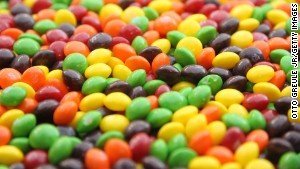The 2015 guidelines recommend a “healthy eating pattern” with limited sugar and saturated fat, less salt and more vegetables and whole grains. The guidelines are revised every five years, and the draft version of this year’s guide came in months ago at more than 500 pages. The guidance affects everything from what’s served in school and prison lunches to how food labels work. It helps dietitians guide their clients. Experts say it also puts pressure on manufacturers and restaurants about what they put in their food. At the end, “Diet is essential to health … we are really left with no solid advice for most people,” but DietSensor can fulfill those gaps left without answers.
Read the full article at: edition.cnn.com
The US government had set up a dietary guideline of nine recommended things you should eat in order to have a proper diet. These latter will help the Americans to have a healthy eating pattern by reducing the amount of sugar and fat intakes during the day. Some nutrients are back on track like egg and protein food such as seafood, lean meat and poultry. The guidelines argued that some fat need to be present in food as it is beneficial to the body as long as it is under controlled. However, food counting is not something very easy as you can easily lost sight of the target or have inaccurate intakes at the end of the day. The first nutritional coaching app to help you better manage chronicle conditions and fitness DietSensor, makes food tracking so easy and accurate that anybody will be able to know what and how much he or she is about to eat, every day, without a huge effort. Moreover, the DietSensor app is designed so that user get a nutritional coach at the tip of his fingers throughout a well guided schema which will bring the line of conduct recommended.




